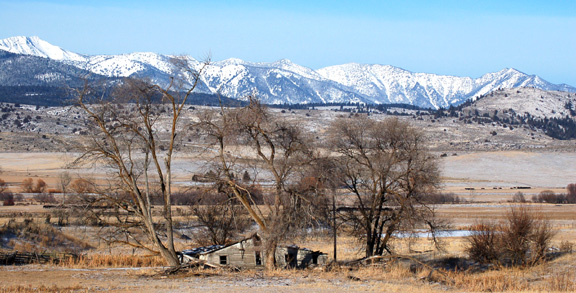
Apocalypse Soon: Halloween Interview on Overpopulation with Kierán Suckling
Scared of ghosts, goblins, and jack-o-lanterns? None of those are on the Santa Fe Reporter's list of the top five environmental horrors. But human overpopulation is. "Apocalypse Soon: Today's Environmental Horrors Could Lead to a Scary Sci-Fi Future" interviews Center for Biological Diversity director Kierán Suckling. Click below to read the whole article. Here are few excerpts:
"Virtually everything that is destroying wildlife habitat and the environment is driven by overpopulation," Kierán Suckling, executive director of the nonprofit Center for Biological Diversity, says.
"Whether it's too many people diverting water out of the Rio Grande or too much wood use leading to the logging of old-growth forests…the bottom line is there are too many people using too many resources to be able to have a healthy environment."
"It's great to focus on reducing our carbon footprint, but...unless we start reducing the footprints to begin with, we and other species are not going to survive on this planet."
"The majority of environmental groups avoid addressing overpopulation like the plague…I think that's largely because they lack the courage of their convictions… they are fearful that in saying that [we are overpopulated] they will be viewed as being anti-human somehow--as if squalor and overpopulation is somehow pro-human."
Read the Santa Fe Reporter interview and learn what the Center's doing to confront theoverpopulation crisis head-on:
(http://www.biologicaldiversity.org/news/center/articles/2009/santa-fe-reporter-10-28-2009.html)
OVERPOPULATION
http://www.biologicaldiversity.org/campaigns/overpopulation/index.html
The human population doubled from 1 to 2 billion between the years 1800 and 1930 — an unparalleled event in the planet’s history. No large mammal had ever grown to such numbers or commandeered so many resources. The impact on North America’s native species was devastating:
Driven extinct by hunters, the last eastern woodland bison was seen in West Virginia in 1825.
Undulata delissea, a Hawaiian plant, was driven extinct in 1865 by domestic cattle.
The beautiful Falls-of-the-Ohio scurfpea, which existed on a single island, was drowned by U.S. Dam No. 41 in Kentucky in 1881.
The Whiteline topminnow was last seen Alabama in 1899, its spring habitat repeatedly pumped dry by the growing human population.
The Culebra parrot was hunted and collected to extinction in Puerto Rico by 1899.
The Rocky Mountain grasshopper was purposefully driven extinct — a bounty was even placed on its head — by 1903.
Merriam’s elk was hunted to extinction in Arizona in 1906.
The Tennessee riffleshell disappeared in 1930 due to pollution and dams.
The human population doubled again by 1975, this time taking just 45 years. The rate of extinction also increased. Today’s population stands at 6.8 billion and, if it continues on course, will reach 8 billion in 2020 before leveling off at about 9 billion in 2050. If it doesn’t level off, the worldwide population could theoretically reach 15 billion by 2050, but that is unlikely due to the insurmountable economic, political, and ecological crises that would likely ensue.

By any ecological measure, Homo sapiens sapiens has exceeded its sustainable population size. Just a single human waste product — greenhouse gas — has altered the chemistry of the planet’s skies and oceans, causing global warming and ocean acidification.
In the United States, which has the world’s third-highest population after China and India, the fertility rate is rising again after leveling off and declining in previous decades. Our rate of reproduction is now at its highest level since 1971. At 2.1 children per woman, the birthrate is the highest of any developed nation and well above the developed-world average of 1.6. Our current population tops 300 million and is projected to grow by 50 percent by mid-century, eventually approaching 450 million.
Discussion of overpopulation has become somewhat taboo in the environmental movement. To change this dynamic, more than 200 conservationists and scientists, including the Center for Biological Diversity, pledged during the February 2009 Global Population Speak Out to promote awareness of the problem.
The Center’s primary mission is to stop the planetary extinction crisis that’s wiping out rare plants and animals in every nation, ocean, and ecosystem on earth. Explosive, unsustainable human population growth is an essential cause of the extinction crisis.
Through the empowerment of women, education of all people, universal access to birth control, and a societal commitment to ensuring that all species are given a chance to live and thrive, we can reduce our own population to an ecologically sustainable level. This will decrease human poverty and crowding, increase our standard of living, and sustain the lives of plants, animals, and ecosystems everywhere.












No comments:
Post a Comment